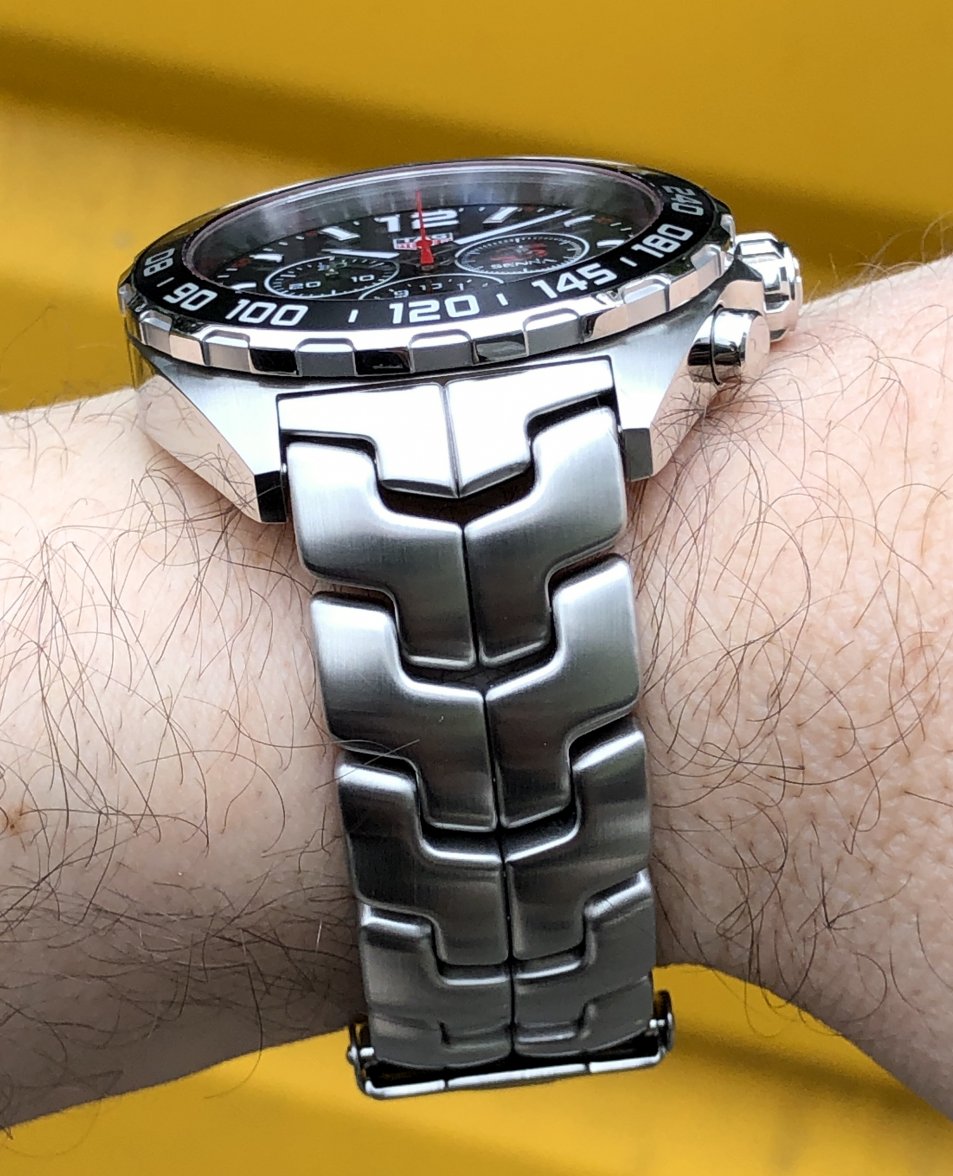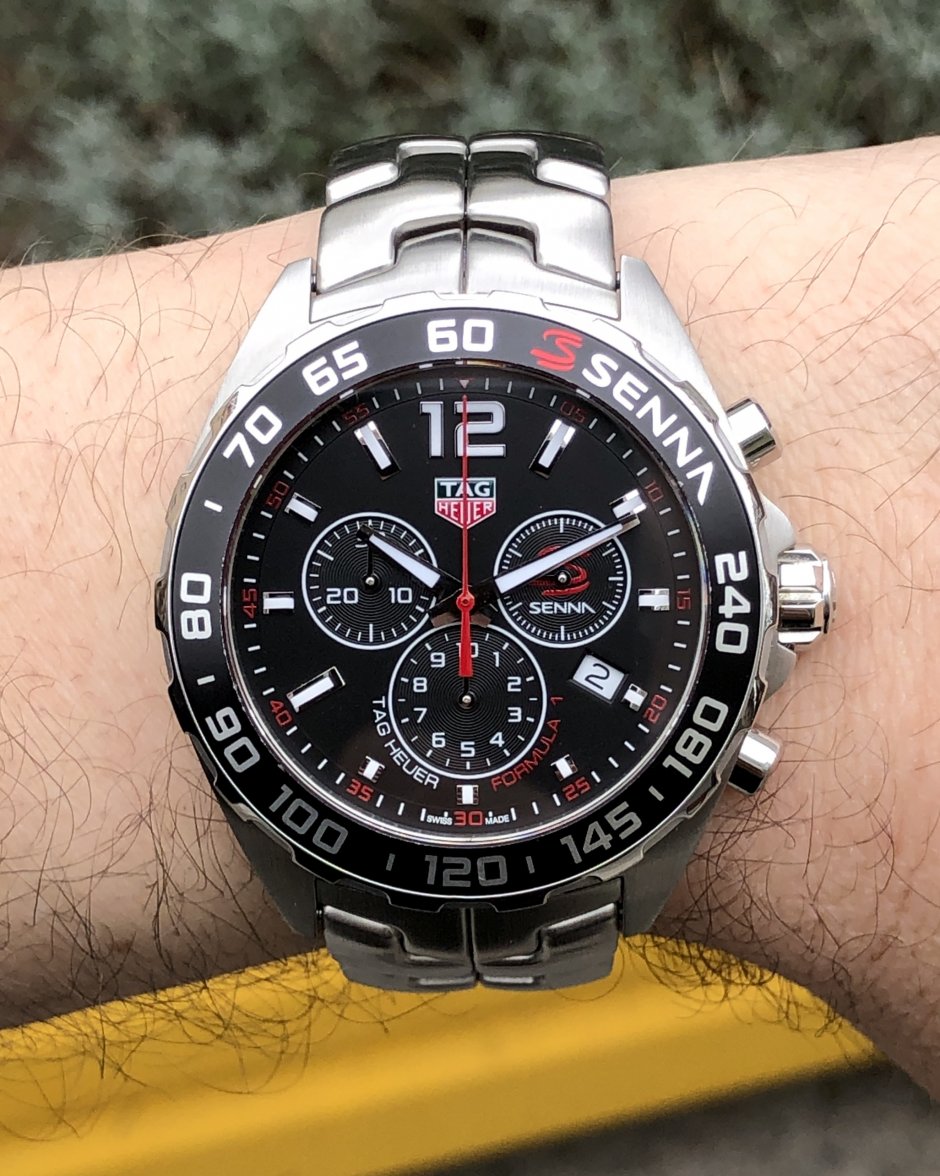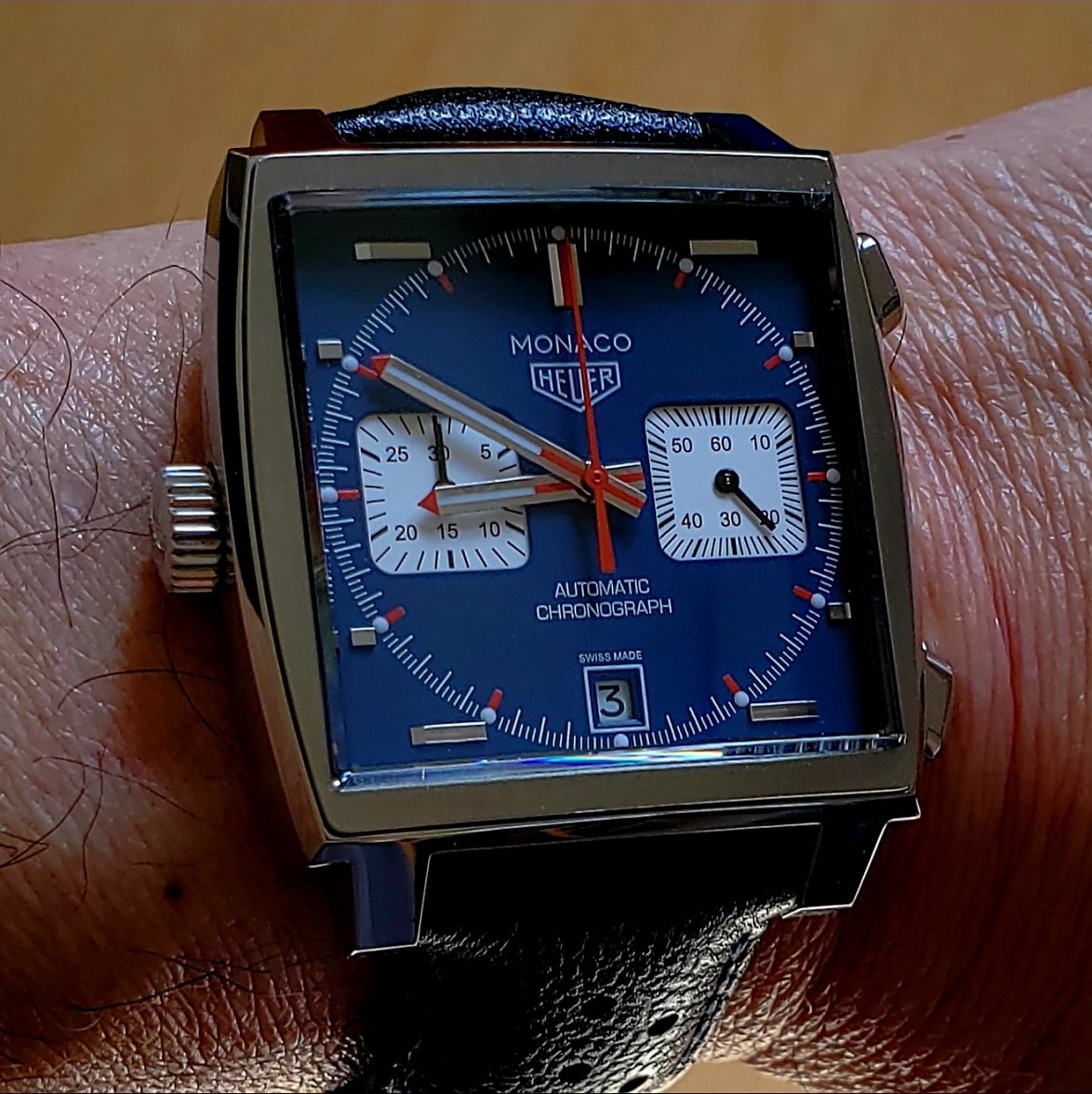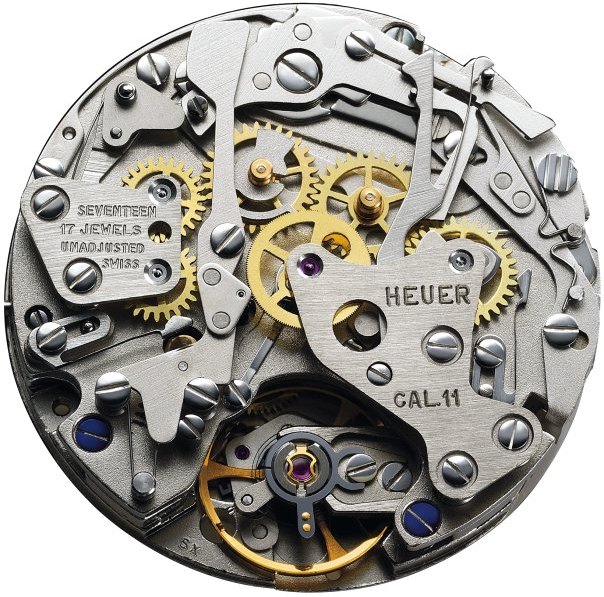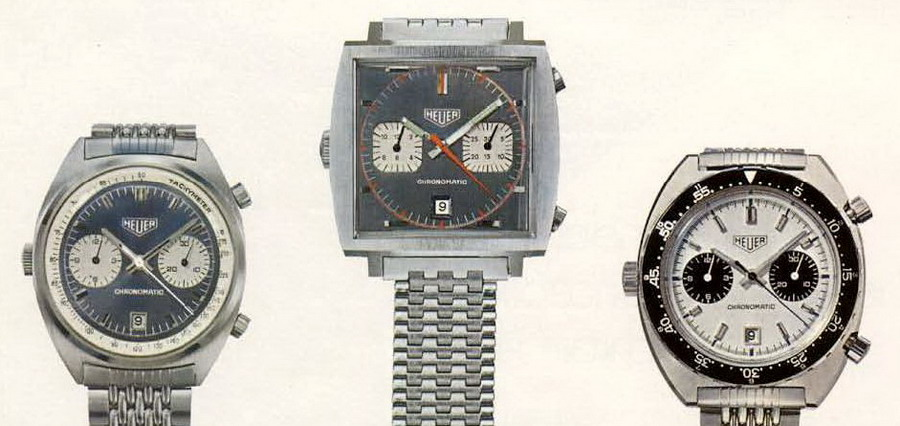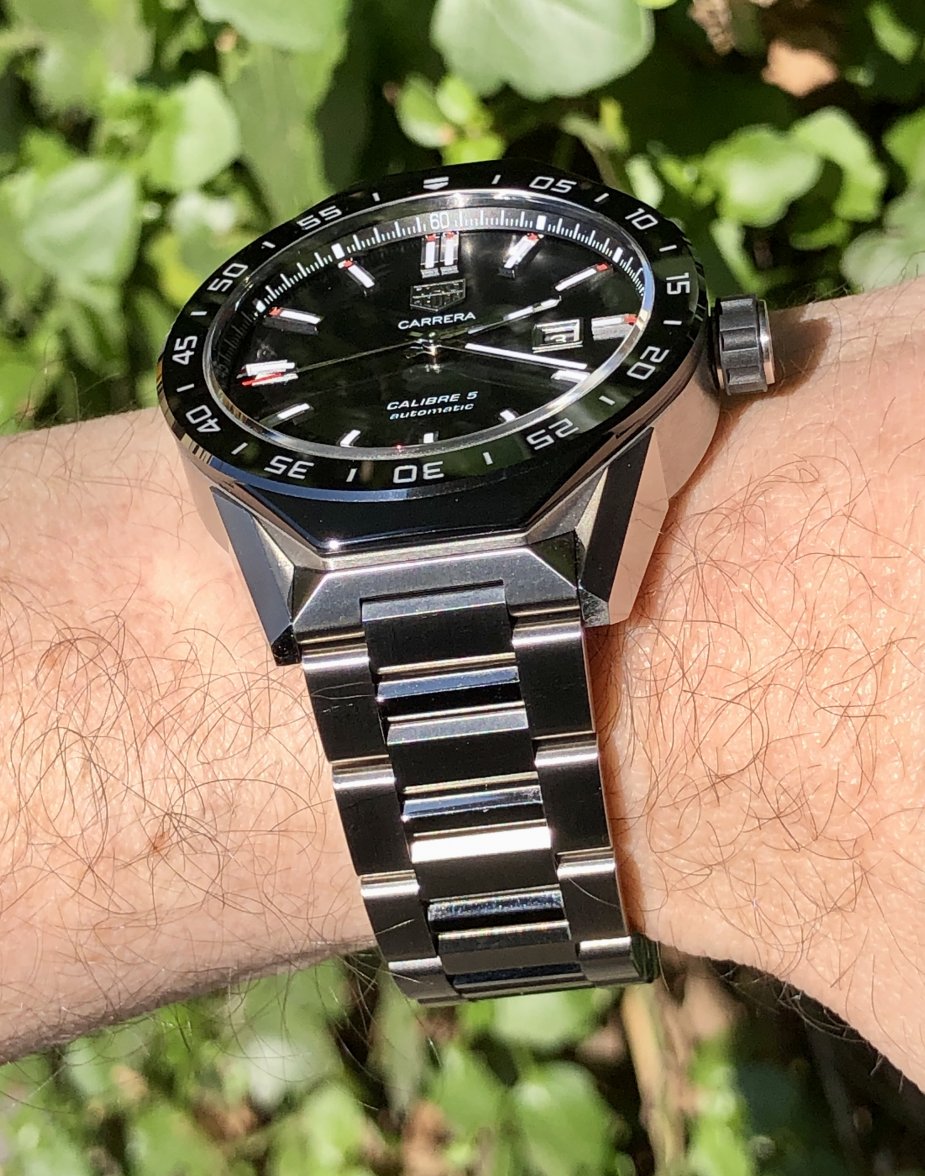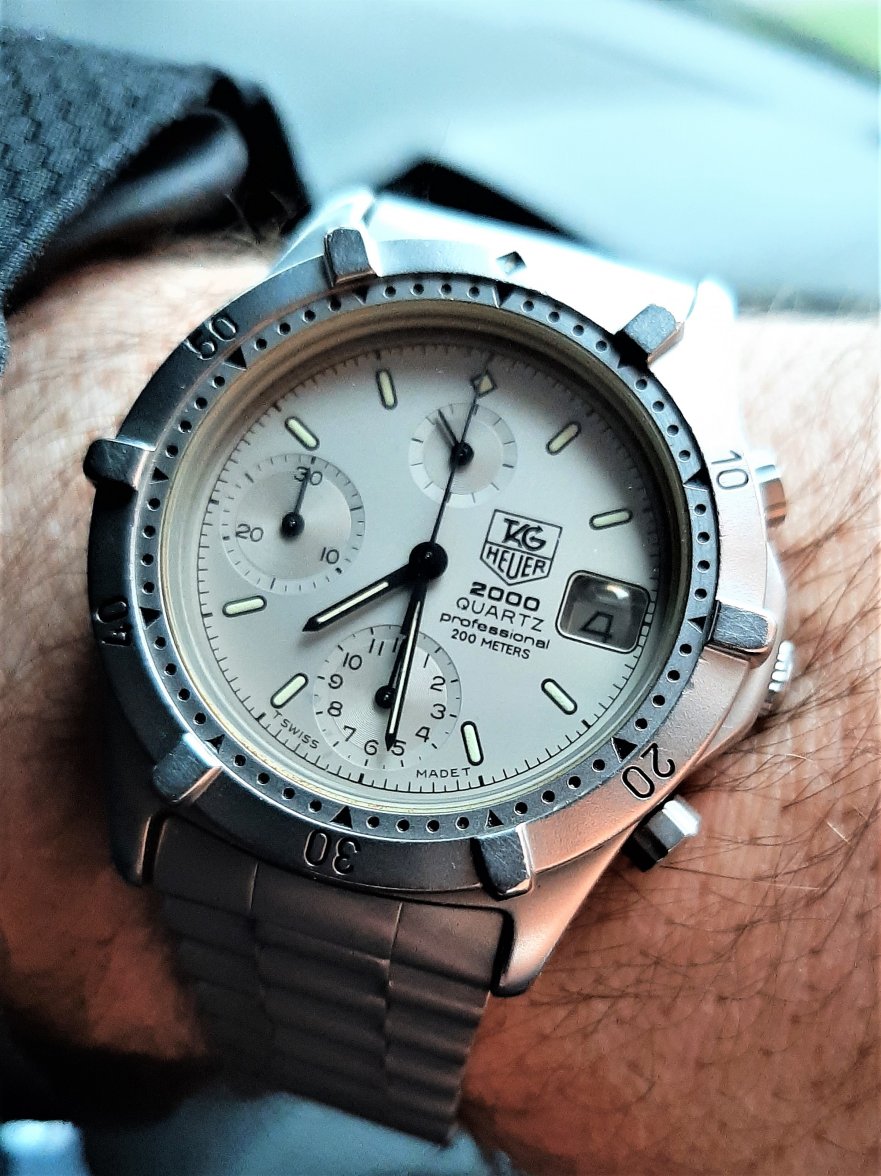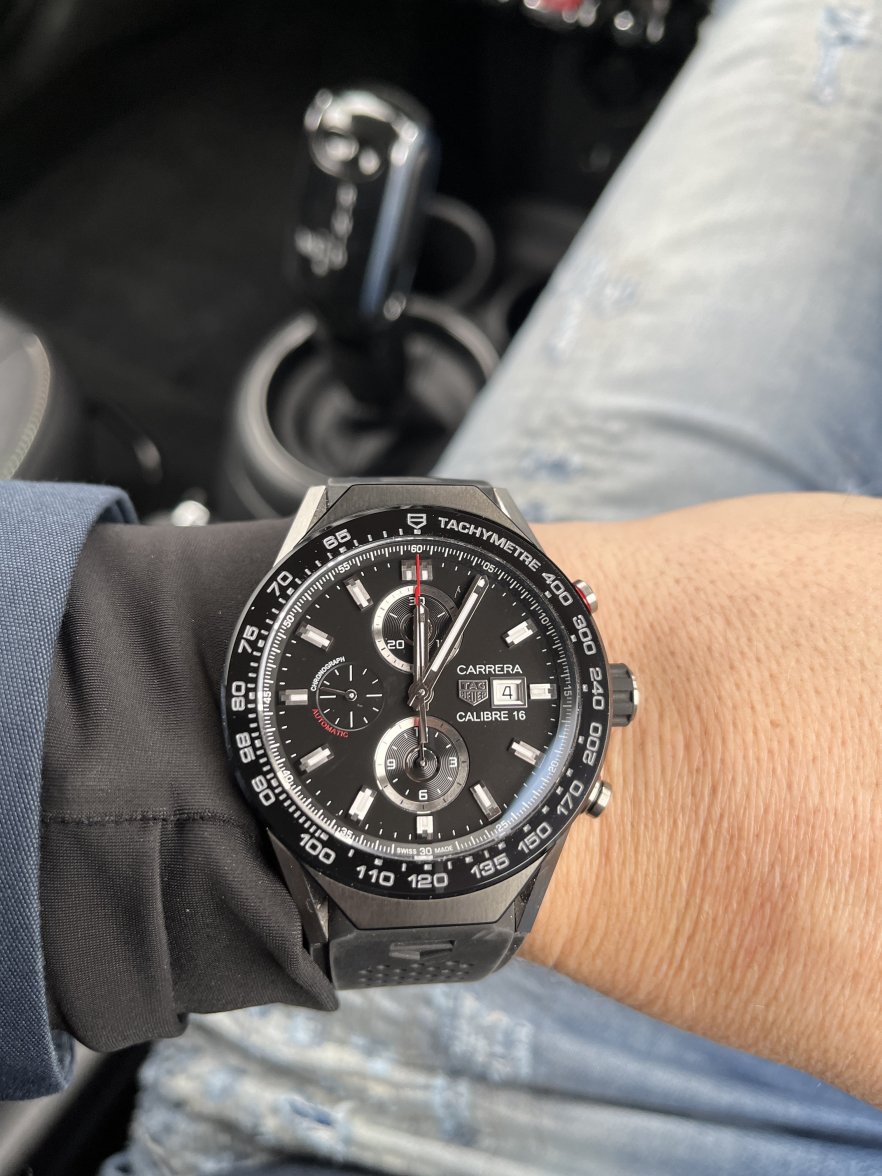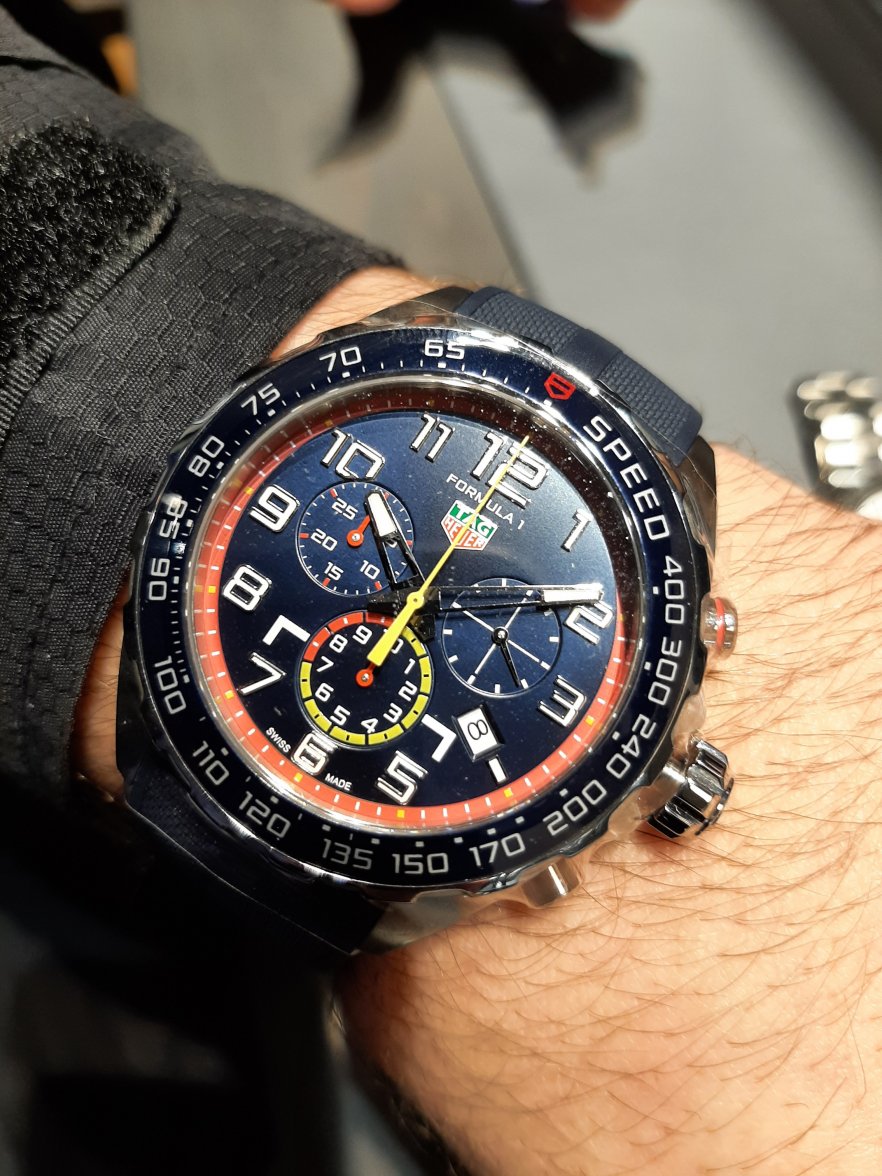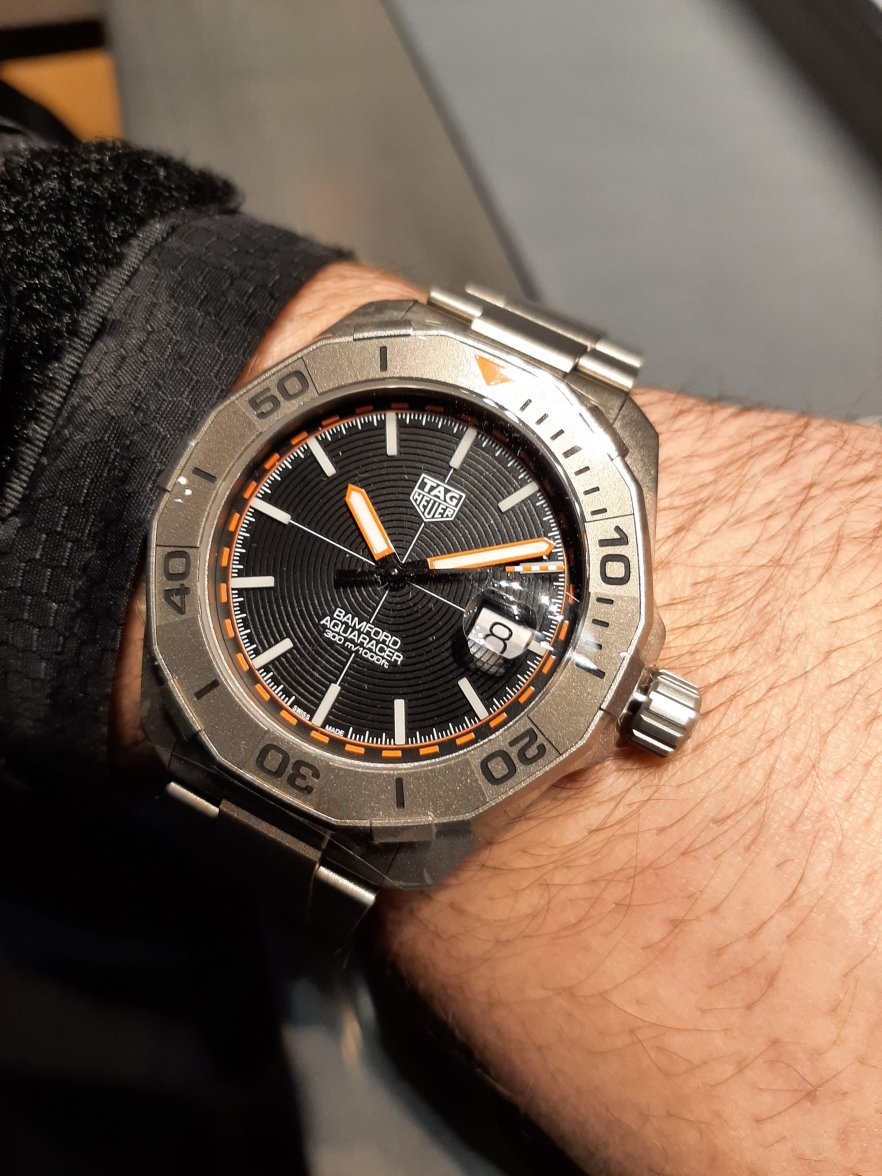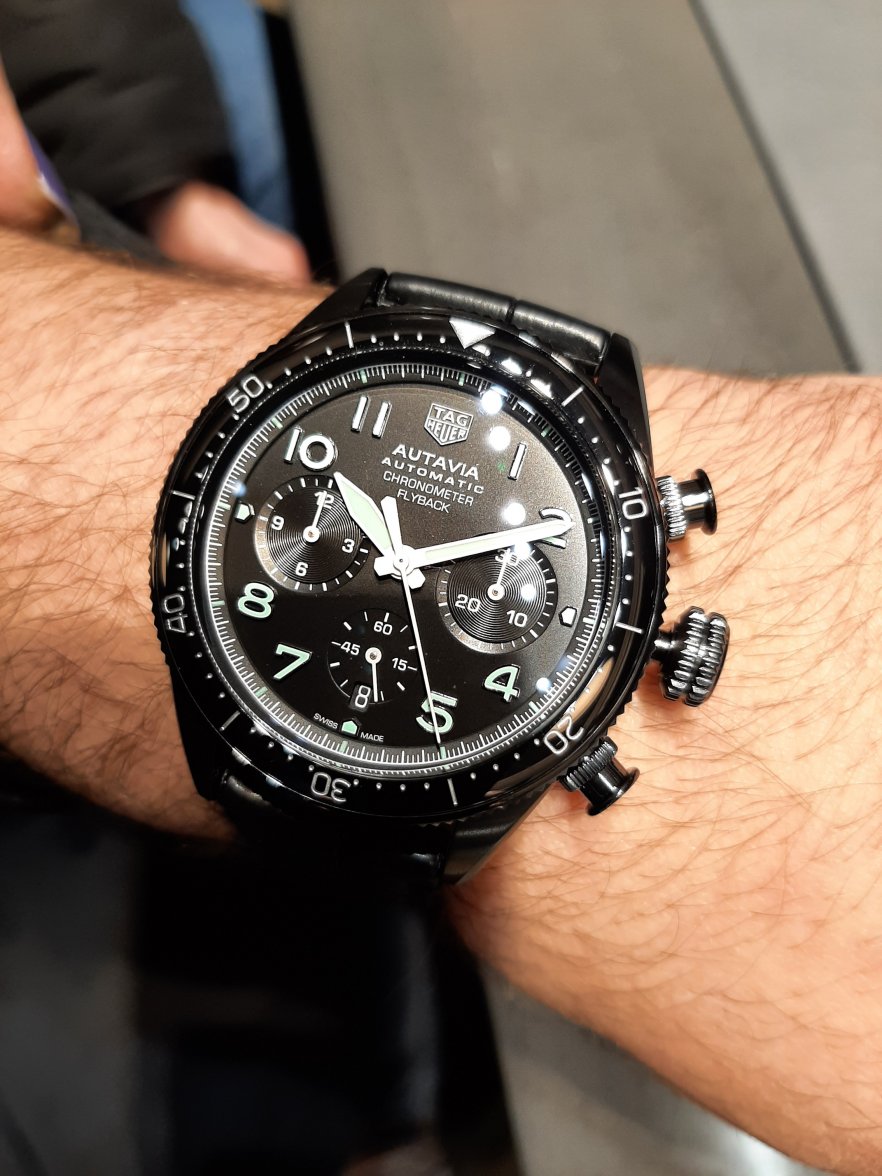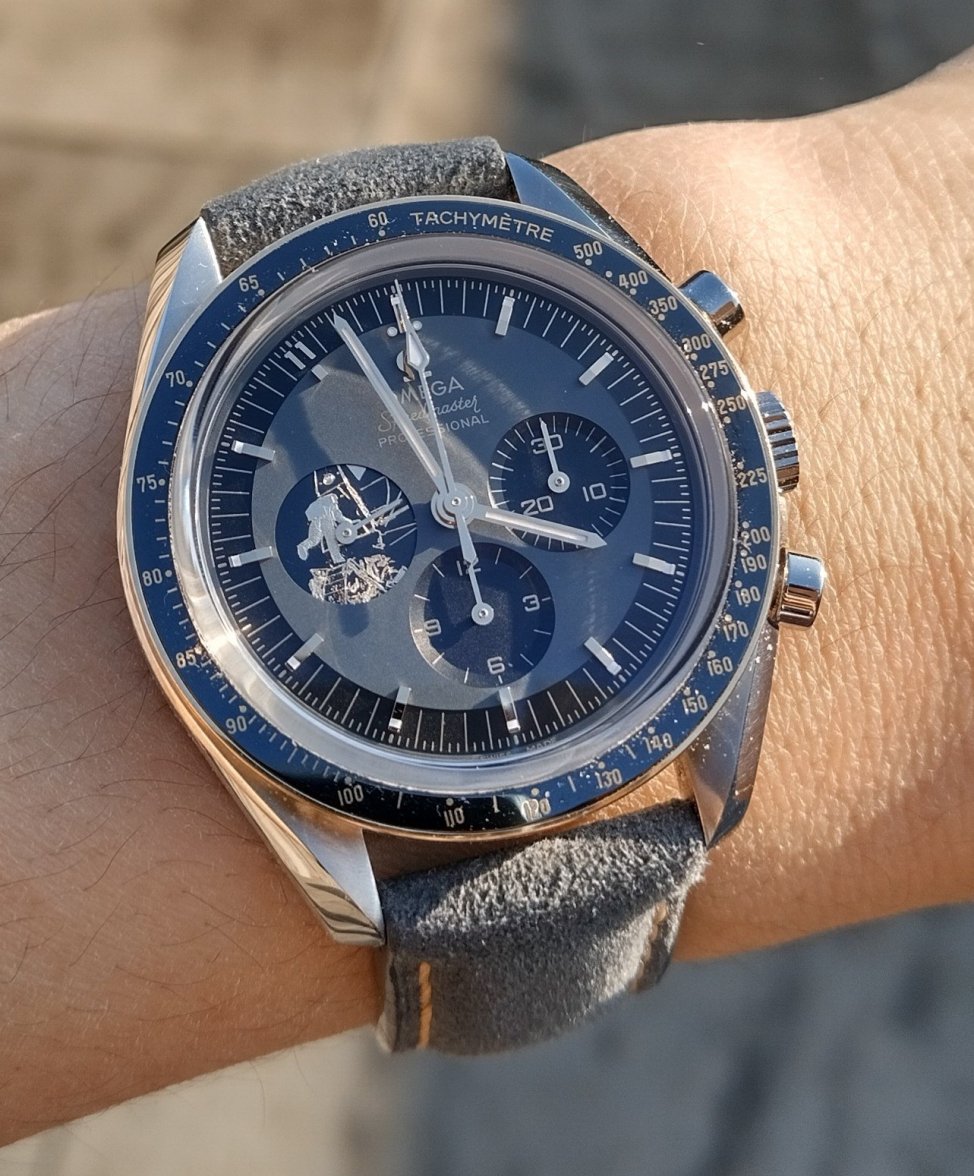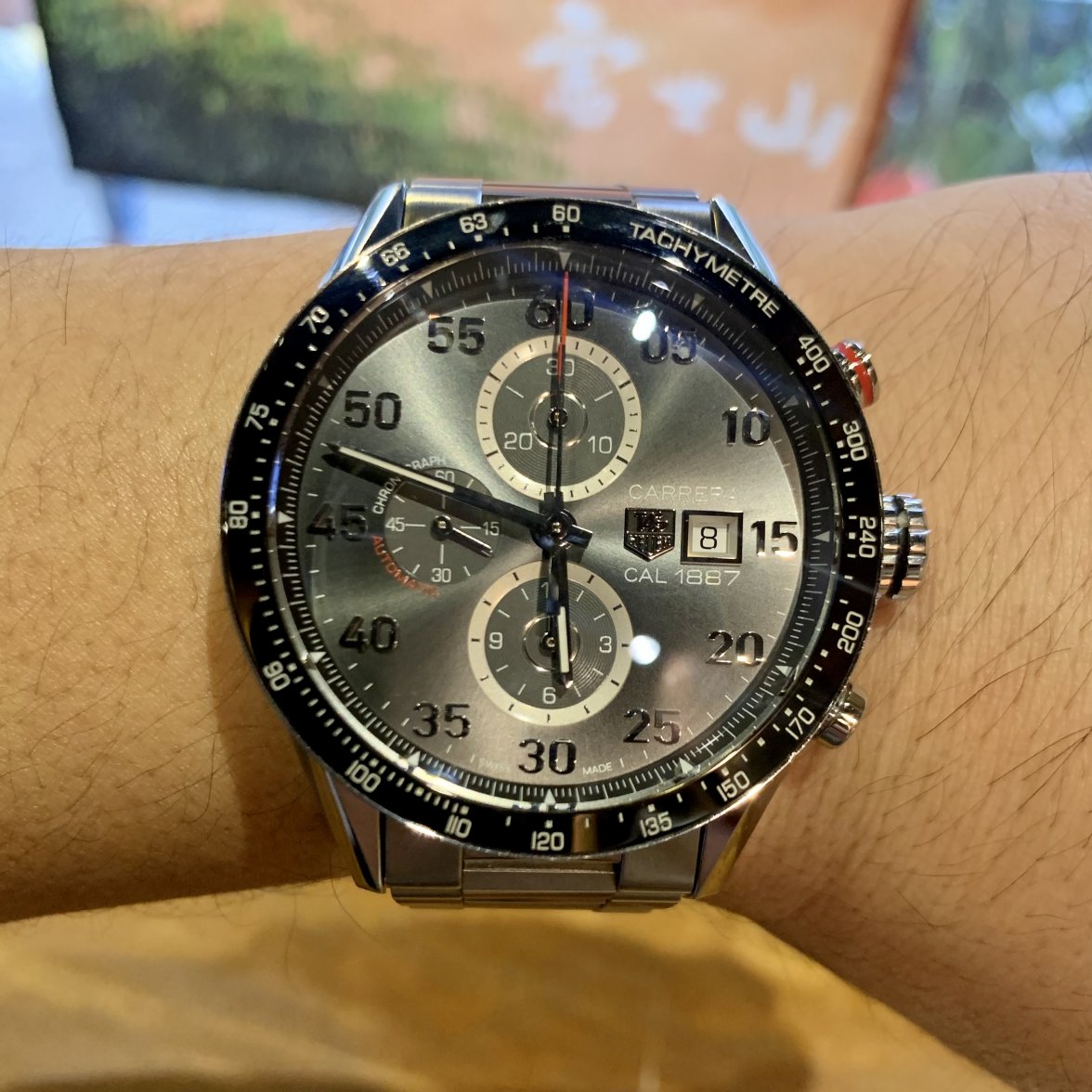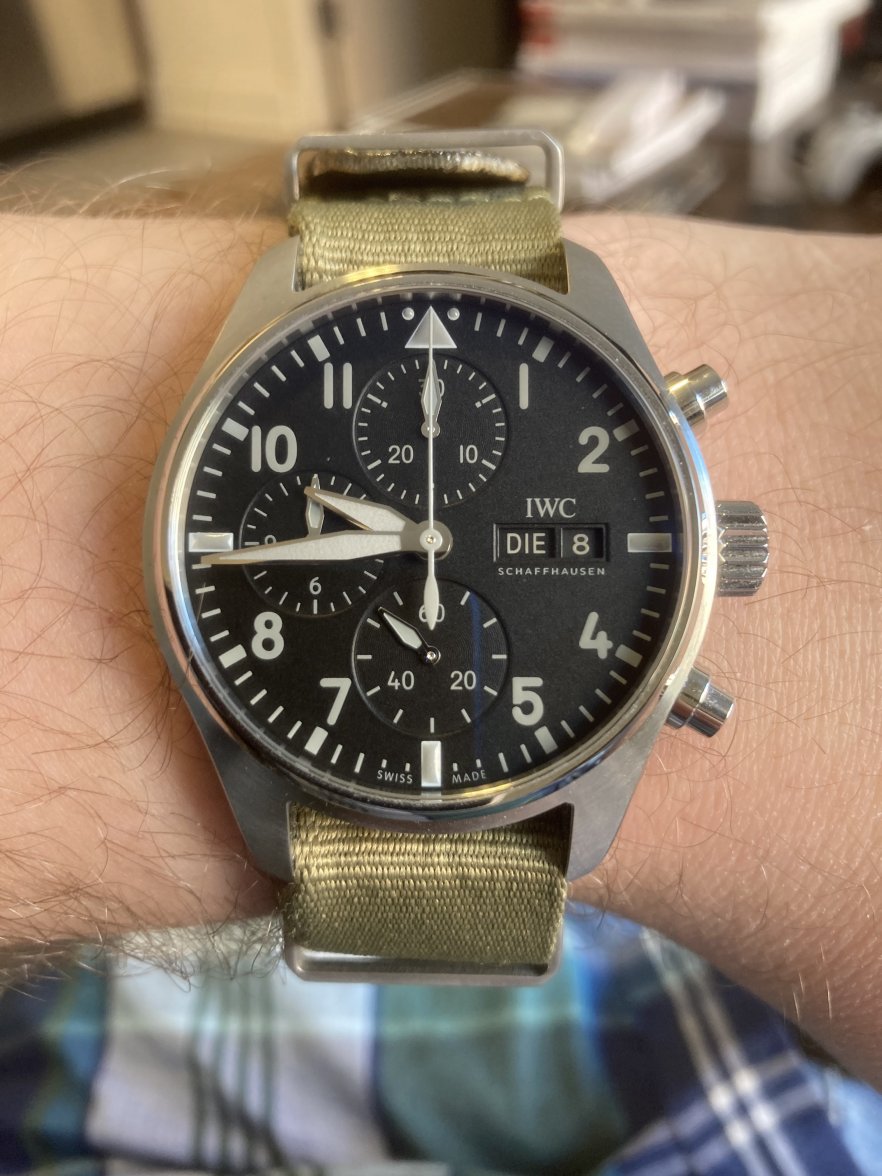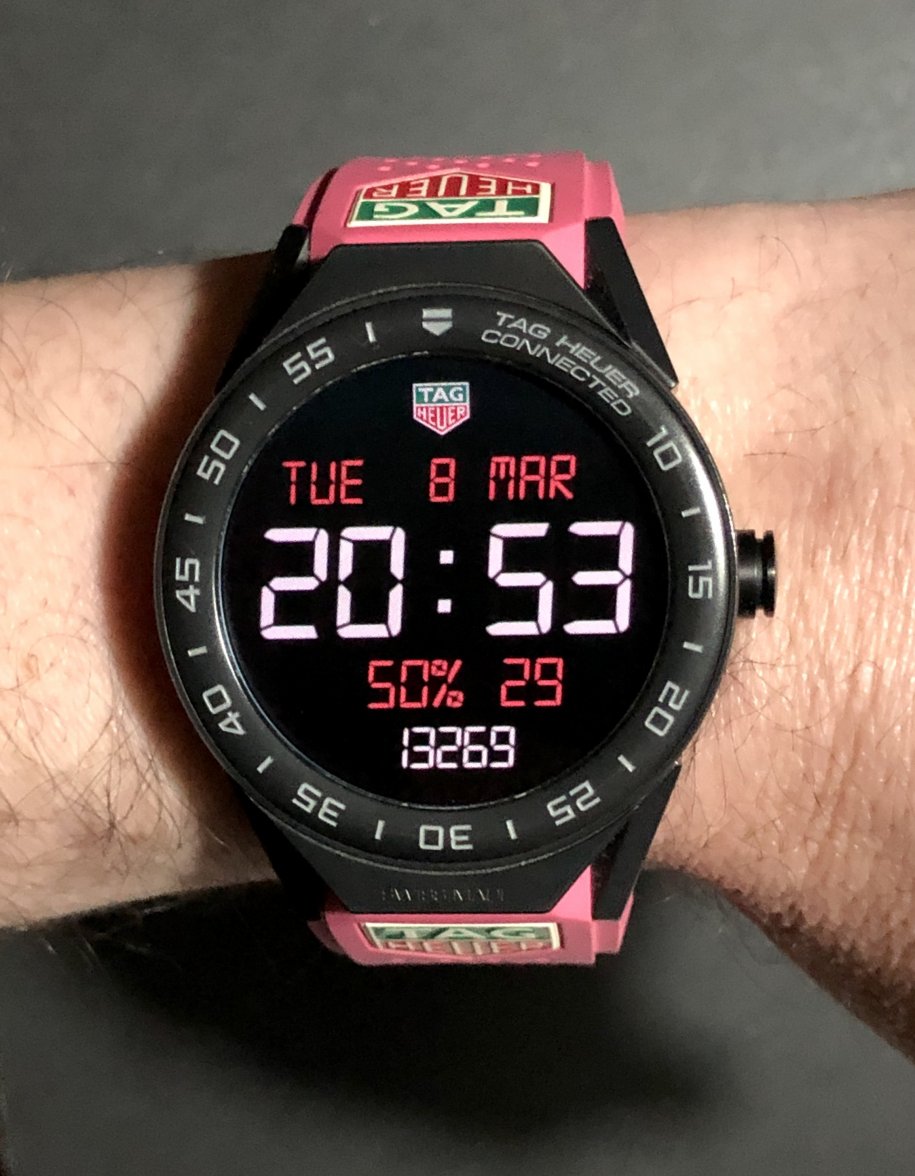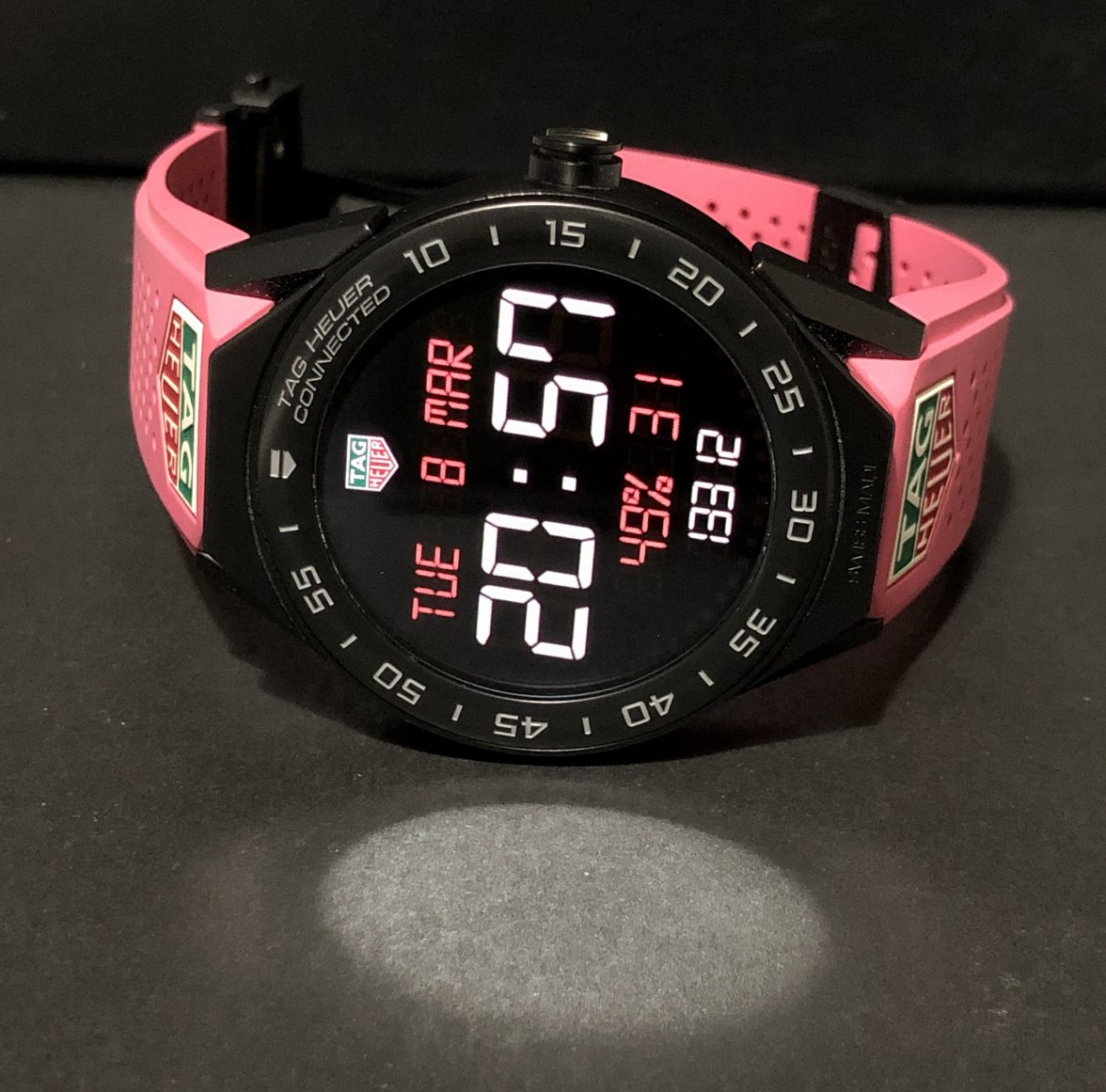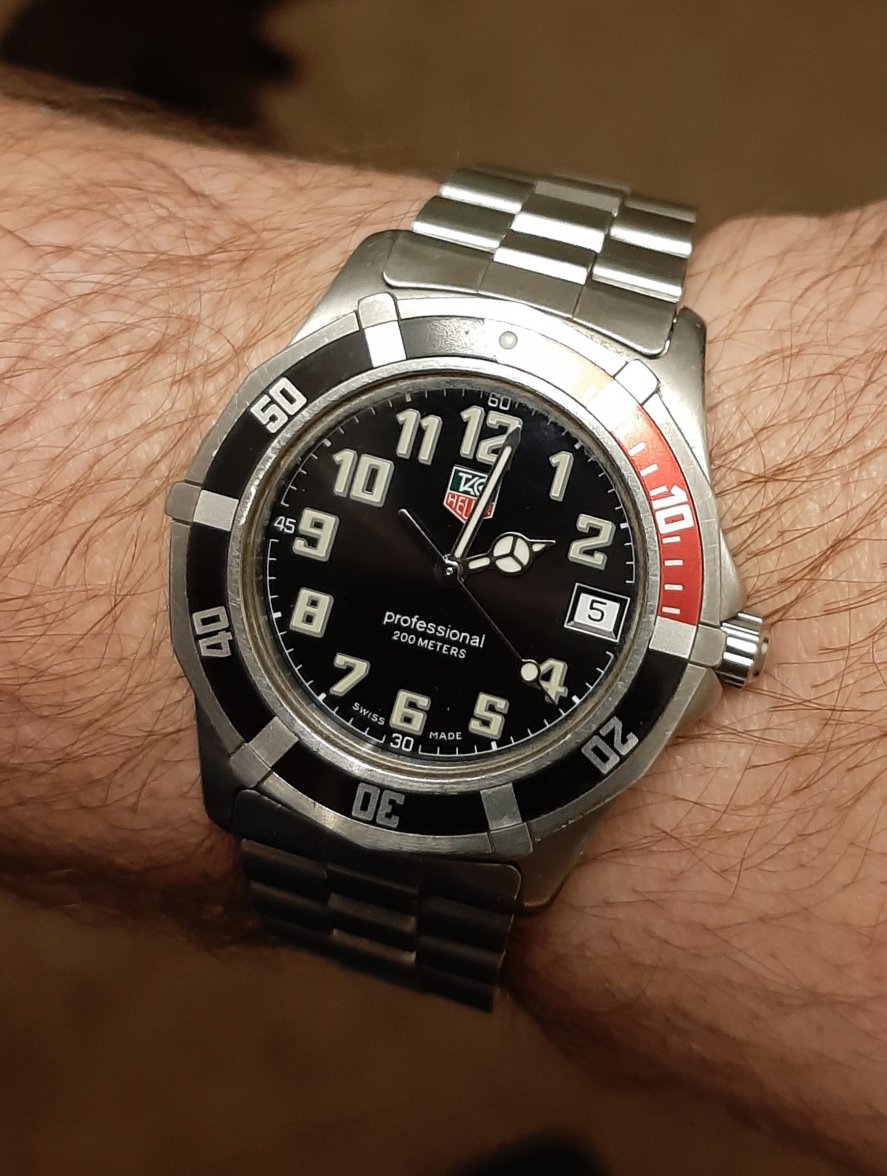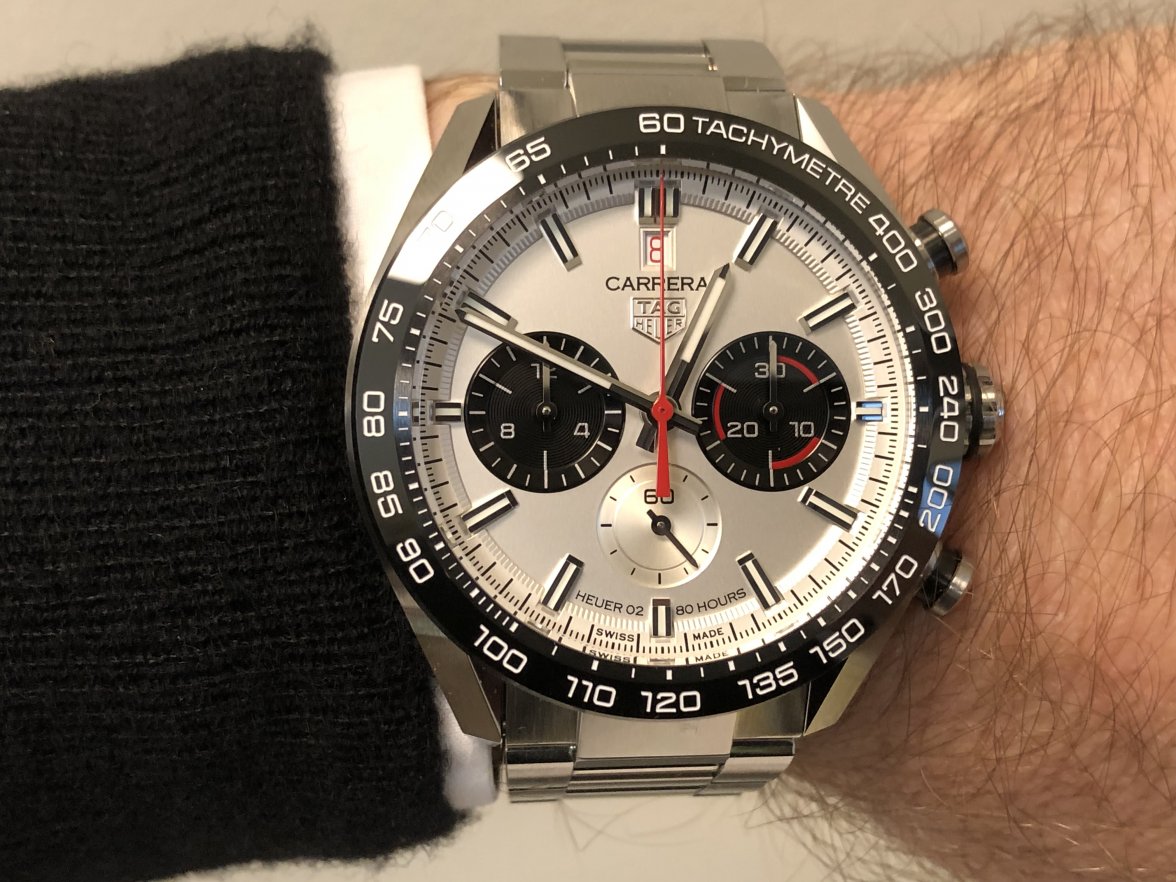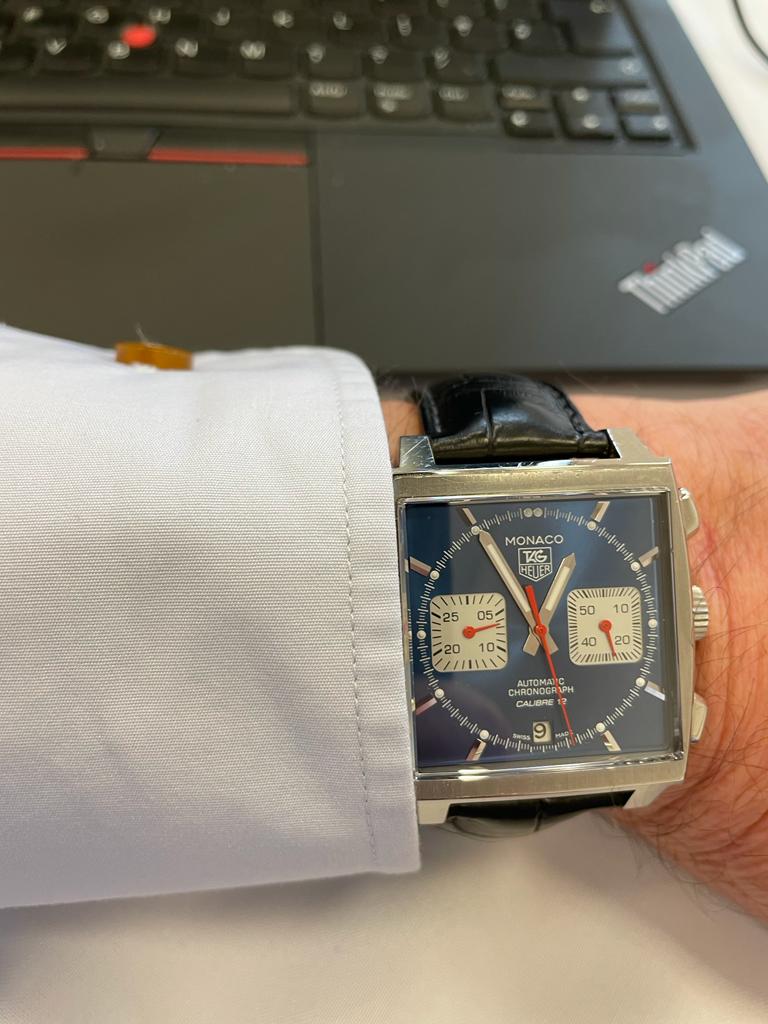What's on your wrist? / What are you wearing? (WRUW)
Hubert
··TAG Heuer Forums ModeratorOnly one choice for today; not only is it #tHEUERsday but also the Monaco's Birthday - March 3rd, 1969!!!
https://www.watch-wiki.net/doku.php?id=chronomatic
HISTORY
The Chronomatic was the result of a remarkable alliance of leading watch manufacturers. Dubois Dépraz first investigated the idea of combining a chronograph module of their design with a thin Büren micro-rotor automatic movement, but it was Heuer-Leonidas who drove the project. Heuer had the same idea for an automatic chronograph, approaching Dubois Dépraz independently with the idea. Once it appeared feasible, Heuer brought in Buren. Unable to afford the development and production of such a revolutionary movement, the consortium was forced to turn to rival Breitling, who agreed to join the effort. The final addition was Hamilton, who purchased Buren during this development project.
On March 3, 1969 the group presented the project to the world press simultaneously in Geneva, New York, Hong Kong and Beirut. Formerly code-named “Project 99”, the team unveiled the Chronomatic calibres at that event Calibre 12 was the main product, with Calibre 11 being a slower-running variant and Calibres 14 and 15 adding a 24 hour function and small seconds, respectively.
There is some controversy about who was truly first to launch an automatic chronograph and under what conditions. On January 10 of the same year, Zenith/Movado presented their own development of a self-winding chronograph movement, called "El Primero", i.e. “The First”. Both developments highlight, each for itself, the excellence of the Swiss watch making art. But at the same time, Seiko had quietly introduced their own 6139 automatic chronograph movement in Japan. Prototypes of all three movements were available at the same time, with Seiko and the Chronomatic team first to market in the summer. It was not until the end of 1969 that Zenith was able to release their El Primero to the market.
Hubert
··TAG Heuer Forums ModeratorAlbert-AMG
··TAG Heuer Forums Moderator- Posts
- 145
- Likes
- 173
danwel
·Albert-AMG
··TAG Heuer Forums ModeratorD danwelA very happy day for me today to finally have the Cal16 head in my possession
Albert-AMG
··TAG Heuer Forums ModeratorAquagraph
·Probably the Aquaradar, but the Autavia is a lot nicer than i expected and it didn't strike me as thick at all
..
